Case Studies.
Add Case Study
Our Case Study database tracks 18,927 case studies in the global enterprise technology ecosystem.
Filters allow you to explore case studies quickly and efficiently.
Download Excel
Filters
-
(5,794)
- (2,602)
- (1,765)
- (764)
- View all
-
(5,073)
- (2,519)
- (1,260)
- (761)
- View all
-
(4,407)
- (1,774)
- (1,292)
- (480)
- View all
-
(4,158)
- (2,048)
- (1,256)
- (927)
- View all
-
(2,488)
- (1,262)
- (472)
- (342)
- View all
- View all 15 Technologies
- (1,732)
- (1,626)
- (1,605)
- (1,461)
- (1,423)
- View all 42 Industries
- (5,782)
- (4,114)
- (3,091)
- (2,780)
- (2,671)
- View all 13 Functional Areas
- (2,568)
- (2,482)
- (1,866)
- (1,561)
- (1,537)
- View all 127 Use Cases
- (10,333)
- (3,499)
- (3,392)
- (2,982)
- (2,593)
- View all 9 Services
- (503)
- (432)
- (382)
- (301)
- (246)
- View all 737 Suppliers
Selected Filters
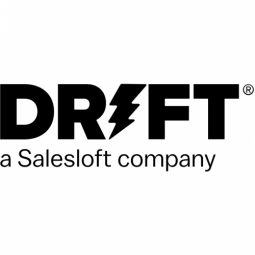
|
Digital Transformation Success: Quadient's Lead Generation with Drift
Quadient, a company that provides intelligent communication automation, parcel locker solutions, and smart mailing and shipping solutions, was facing a challenge in generating more engagement and prospects. They identified the need for digital transformation to meet their customers' expectations and increase engagement with potential customers. The team was also looking for an efficient solution to effectively route support queries. They wanted to move forward into the 21st century and explore new ways of engaging with their existing customers while also trying to increase engagement with their prospects. The idea of a chatbot made sense to them based on their customers and their expectations.
|
|

|
Roland DG's Digital Engagement Strategy: Influencing $1.8 Million in Pipeline with Drift
In 2021, Roland DG, a global manufacturing leader, identified two key challenges that led them to consider an automated conversational solution in EMEA. Firstly, they observed that customers wanted to interact with them on their own terms, not just when their team was available. Secondly, they noticed that while many companies across various industries were using chatbots to directly engage their website visitors, manufacturing companies were yet to catch up with this trend. Recognizing these challenges, Roland DG began exploring various chat providers to guide their digital engagement strategy.
|
|

|
Driving Qualified Meetings with IoT: A Case Study on RollWorks and Drift
RollWorks, a division of NextRoll, was in search of a solution that would enable personalized, real-time interactions with website visitors, improve their lead generation and routing processes, and enhance their overall website experience. They were looking for a platform that could align their marketing and sales teams, and confidently grow revenue. The company considered several Conversational Marketing platforms during their evaluation process. The challenge was to find a solution that offered robust features, an intuitive interface, integrations, and a focus on Conversational Marketing and Sales enablement. The ideal solution would also need to integrate seamlessly with their existing tech stack.
|
|

|
SAP Concur's Successful Implementation of Drift for Enhanced Customer Experience and Sales Efficiency
SAP Concur, a leading brand for travel, expense, and invoice management solutions, was facing challenges with their previous chat tool. The tool was not providing the desired level of personalization and optimization. The company wanted a solution that would not only help their sales team drive new leads but also reduce the volume of support inquiries they were receiving. As a global company servicing millions of users, SAP Concur also wanted to nurture their customers at every stage of the buyer’s journey. They realized the need to design and optimize their services based on data, rather than assumptions.
|
|

|
Workiva's Transformation: Achieving 1900% ROI with Drift
Workiva, a global SaaS company, faced several challenges in 2020. The sales team, led by Melissa Raber, Senior Director of Global Inside Sales, was struggling with the complexity of assembling larger buyer groups, long sales cycles, and difficulty converting top-of-the-funnel buyers. They also lacked visibility into high intent buyers. Tasked with generating 40% of the pipeline for their organization, the team needed a tool that could address these issues, provide visibility to intent data, and engage with conversation-ready, high-intent leads. Workiva had previously invested in an email-based conversational marketing tool, but it was ineffective for generating new business. Melissa knew it was time to find a tried-and-true conversational marketing and sales solution that would help them achieve their pipeline goals by shortening their sales cycle.
|
|
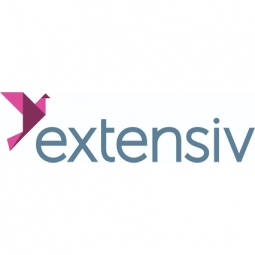
|
Allstate Moving Systems Scaled Operations by Replacing Legacy Systems
Allstate Moving Systems, a rapidly growing third-party logistics (3PL) provider, was facing challenges with their existing manual process of managing their customers through Excel. The company was outgrowing this system and needed a solution that would not only fit their current business needs but also allow them to scale as they grew. They were using a legacy software system to manage inventory without billing automation and captured billing using Excel. This led to limited visibility of dock appointments, causing them to waste time manually verifying dock appointments and leading to unexpected surges. The company was in dire need of a scalable warehouse management system (WMS) to boost operational efficiencies.
|
|

|
Ada's AI Solution Empowers Moka's Strategic Growth
Moka, a direct-to-consumer FinTech company, was experiencing rapid growth since its launch in 2017. The Moka app had been downloaded over 1 million times and had thousands of 5-star reviews. However, with this growth came the challenge of scaling its customer support. Moka was already using some support functionalities within their CRM ecosystem, but these did not offer robust features that could provide excellent customer experience at scale. The company faced a high volume of messages during billing periods and general inquiries that consumed valuable support staff bandwidth. Moka’s Head of Customer Success, Cloe Tetreault-Tremblay, was faced with the decision of either scaling the support team at the same pace as their user base or automating some part of their customer experience to free up valuable work hours for support agents.
|
|
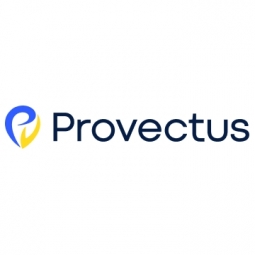
|
Forge Empowers Managers with Generative AI & IDP for Efficient Document Processing
Forge Global, Inc., a leading fintech company, was facing challenges in managing and processing large volumes of complex corporate documents. The company's existing manual and semi-automated document processing pipelines were unsustainable due to their lack of speed, cost-efficiency, and scalability. The task of processing clients’ corporate documentation could not be outsourced due to security and compliance concerns. The documents often contained sensitive information and any data extraction process had to comply with privacy laws and regulations. The company's leaders recognized the need for a more advanced and automation-focused solution to expedite the processing of incorporation documents, automatically extract data from them, and generate incorporation reports. They sought to partner with an AI solutions provider and technology consultancy to design and build the desired platform, while maintaining the security and compliance of its document- and data-centric operations.
|
|
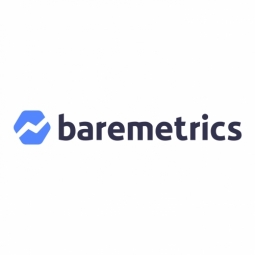
|
Grokability's Journey: Recovering $150k in Failed Charges with Baremetrics
Grokability, a company founded by Alison Gianotto, was facing a significant challenge. Alison needed a quick and efficient way to evaluate her business performance. However, she was overwhelmed with other tasks and didn't have the time to dig deep for answers. As the company grew, time management became less of an issue, but a new problem arose - recovering payments. Alison was managing the help desk, working on installations, and writing software code all by herself. She was strapped for time and needed a solution that would allow her to easily visualize company metrics and glean company insights, without having to build her own tool from scratch.
|
|
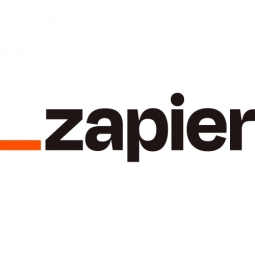
|
Automating Client Onboarding in Digital Marketing: A Case Study
Julie Stoian, a digital marketing consultant and tech coach at ClickFunnels and owner of Create Your Laptop Life (CYLL), was facing a significant challenge in managing her businesses. The manual steps involved in running her course and coaching business were time-consuming and detracted from her ability to focus on her clients and business growth. The manual work meant that Julie either had to spend less time on her clients and businesses or hire additional staff to manage tasks, which would increase costs. The challenge was to find a way to automate these tasks, keep costs low, and allow Julie to focus on more critical aspects of her business.
|
|

|
Automating Event Registration: A Case Study on HubSpot's INBOUND Conference
HubSpot's INBOUND conference, a week-long marketing, sales, and customer service event, has seen a significant increase in attendance over the years. However, the registration process was not always seamless. The event technology used was outdated and relied on archaic infrastructures, making the transfer of information from the event management app into HubSpot's CRM tool and marketing automation a manual and laborious process. This led to a clunky sign-up process, which could potentially affect customer confidence and attendance numbers. The process was also costly and resource-intensive, involving an outsourced team to manage the integration and keep it running throughout the year. This was neither sustainable nor cost-effective.
|
|

|
Leveraging Facebook Lead Ads for Real Estate Lead Generation: A Case Study
In the highly competitive real estate industry, timing and location are everything. Houses can be sold before they're even officially listed, making it crucial for real estate agents to connect with potential buyers as quickly as possible. The challenge faced by real estate agents was the manual and time-consuming process of downloading leads from Facebook and uploading them to their Customer Relationship Management (CRM) systems. This repetitive task was not only tedious but also inefficient, as it had to be repeated every week or even every day. Moreover, the agents were not able to respond to the leads in real-time, which could potentially result in lost opportunities.
|
|

|
Automation in Insurance: How SelectQuote Saved $15,000
SelectQuote Insurance Services, a company providing insurance quotes, was faced with the challenge of providing reliable insurance quotes to clients in an efficient manner. The company wanted to streamline the process of cross-application functions without the need for a developer to build a series of APIs. The process involved a potential client filling out a form with their phone number, assigning the client to a SelectQuote agent, pulling quotes from SelectQuote's vendors, and then sending the quotes to the client. The company wanted to automate this process to save time, money, and resources.
|
|

|
Automating Business Operations: A Case Study of Speak English with Vanessa
As a solopreneur, Vanessa Prothe, founder of Speak English with Vanessa, faced the challenge of managing multiple roles in her business. She was not only the CEO but also the marketer, salesperson, customer support, and engineer. Her primary goal was to focus on developing courses and connecting with clients, not learning how to code or build tools. As her business grew, she found it increasingly difficult to manually manage tasks such as enrolling students, adding them to mailing lists, and processing payments. The challenge was to find a solution that could automate these tasks, allowing her to focus on her core business of teaching English as a second language.
|
|

|
AllSaints: Enhancing Online Retail Experience and Reducing Costs with Google Cloud
AllSaints, a global fashion retailer, faced a significant challenge in managing its online sales platform. With over two million visits per month to the AllSaints website, delivering a smooth, fast online experience was crucial. However, predicting sales during peak demand periods was difficult, and the need for infrastructure often doubled during these times. The company had to maintain more than 60 servers to meet peak demand, but almost half of these were idle outside of peak periods, making the solution expensive. Additionally, installing additional capacity was a slow process, delaying structural changes such as expansion into new territories or the deployment of new features. As an established luxury brand, AllSaints knew that its customers valued consistency and a seamless online experience. Shortfalls in infrastructure capacity compromised that consistency by causing site instability and degraded performance.
|
|

|
Atom Bank: Leveraging Google Cloud to Revolutionize Digital Banking
Atom bank, the UK’s first app-based bank, was facing challenges with its existing infrastructure which was slowing growth and limiting the bank’s agility. As the bank attracted more customers and wanted to offer more products, it began to feel the need for a more robust and flexible infrastructure. Initially, due to regulatory constraints, Atom bank had partnered with a third-party to host its infrastructure in an on-premises data center. However, as regulations evolved to accommodate cloud computing, Atom bank began searching for an alternative infrastructure. The bank needed a solution that would ensure speed and reliability even as it gained more customers and added more services. It also needed to be cost-effective and agile, allowing the bank to start new projects or launch new environments without having to invest in new hardware every time.
|
|

|
Augury: Leveraging IoT and AI for Real-Time Machine Health Insights
Augury, a company dedicated to providing insights into the health and performance of manufacturing machines, was facing a challenge. The founders of Augury, graduates of the Technion—Israel Institute of Technology, realized that while they could often tell when a machine was malfunctioning based on changes in sound or performance, the machines themselves lacked the ability to signal exactly what was going wrong. This led to inefficient troubleshooting methods such as manually cleaning fan airways to solve software problems. Furthermore, as Augury grew and began to handle a significant increase in enterprise customers, it needed to rebuild its IoT platform to be able to scale sufficiently. It required a stable cloud solution for IoT that could offer superior scalability, as well as a broad range of technologies and functionality.
|
|

|
Banco BV's Transformation: Cost Savings and Efficient Cloud Management with FinOps Framework
Banco BV, one of Brazil's largest private banks, was seeking to drive technological innovation more effectively. A significant part of this journey was migrating its infrastructure to Google Cloud from another cloud provider for more flexibility and improved asset allocation. The bank's long-term goals with Google Cloud included using data intelligence to transform customer experience, increasing the potential of open platforms, creating new digital products, and refining the company's data science models. However, the bank faced the challenge of building a team to implement a FinOps culture, which involves adopting financial management best practices for its technology infrastructure. This was crucial as Banco BV was increasing its investment in digital and strategic evolution and needed enhanced cost visibility to create cost optimization and reallocation processes.
|
|
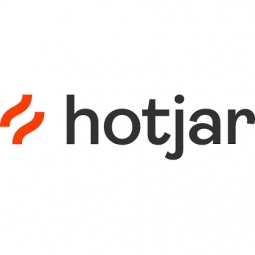
|
Spotahome's Innovative Use of Hotjar for User Experience Improvement
Spotahome, an online platform for mid- to long-term rentals, was facing a challenge in understanding their users and website visitors. The Customer Knowledge Manager, Sara Parcero-Leites, was tasked with ensuring the site was running smoothly and identifying opportunities for improvement. However, the team was not utilizing Hotjar, a behavior analytics tool, to its full potential. The tool was only being used superficially, with a few people looking at some recordings and heatmaps, but not conducting a lot of analysis. This lack of deep analysis was a missed opportunity for Spotahome to gain valuable insights about their users' behavior and improve their platform accordingly.
|
|
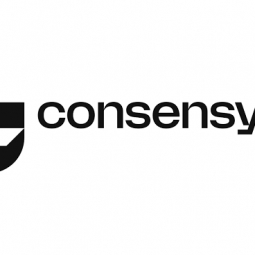
|
Consensys and Societe Generale - FORGE's Collaboration on First Digital Bond Issuance on Ethereum
Societe Generale - FORGE, the digital capital markets platform of the Societe Generale Group, was part of the European Investment Bank's first digital bond on a public blockchain. On 27 April 2021, the EIB launched a multi-dealer unsubordinated, unsecured 2-year bond issuance (EUR 100,000,000) on the Ethereum mainnet, for the registration and settlement of the securities, in collaboration with Goldman Sachs, Santander and Societe Generale. The payment of the issue monies from the underwriters to the EIB were represented on the Ethereum mainnet in the form of Central Bank Digital Currency (CBDC). This transaction was part of a partnership announced in October 2020, under which terms Societe Generale - FORGE selected Consensys to provide technology and services for its ongoing CBDC pilot activities through its Codefi Payments product.
|
|
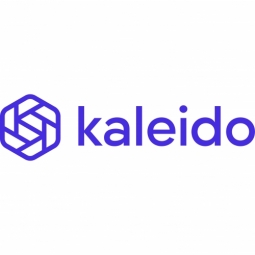
|
Blockchain-Based Financial Networks: A Case Study on Real-World Results
The financial services industry is constantly seeking ways to enhance digital ecosystems and leverage new technologies for a competitive edge. Blockchain technology has shown promise, but the path from discovery to implementation is often unclear. The challenge lies in finding practical uses for the technology and the right go-to-market approach. A significant proof-point of blockchain’s viability for trade finance is komgo, a blockchain-based commodity trade and finance network. However, the challenge for blockchain networks is the protection of private information on the ledger. As networks scale, they need mechanisms that allow for larger sets of blockchain validators. Business consortia also need the ability to govern the digital smart contracts where the business logic is executed.
|
|

|
Blockchain Innovation in Surety Bond Industry: A Case Study on The Institutes RiskStream Collaborative®
The Institutes RiskStream Collaborative®, the largest enterprise-level blockchain consortium in the risk management and insurance industry, identified a significant challenge in the surety industry. The industry is characterized by multi-party data verifications and exchanges between the principal, obligee, and surety, which often leads to inefficiencies and complexities. The Surety Bonds Power of Attorney use case was identified as a starting point to address these issues. However, the process of enabling real-time bond signature and verification, which is crucial to the overall solution, was fraught with difficulties, including high costs, time consumption, and risk.
|
|
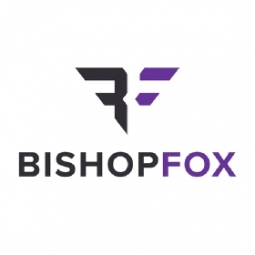
|
Republic Services Enhances Security with Cosmos for Continuous Testing
Republic Services, a leading company in U.S. recycling and non-hazardous solid waste disposal, faced a significant challenge in ensuring the privacy of consumers and business customers across approximately 40 states. Despite having a relatively small attack surface, the company needed to ensure responsible data handling beyond just satisfying compliance needs. They required constant visibility and a thorough understanding of where threats and risks might emerge on their perimeter. The challenge was further compounded as they transitioned to the cloud, specifically Amazon Web Services (AWS), and underwent rapid changes in their IT environment and business operations. The company needed a solution that could provide continuous testing and in-depth information to secure their organization and customers effectively.
|
|
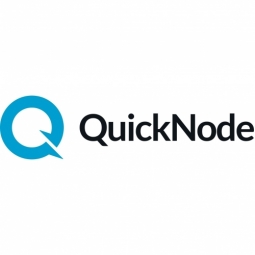
|
QuickNode’s Limitless Calls Per Second Powers Cargo’s NFT Drops on xDai and Matic / Polygon
Cargo, an NFT creation, management, and monetization tool, was facing a significant challenge with its batch minting approach. This approach, which uses the newer ERC-2309 standard, allows creators, developers, and businesses to create an unlimited number of NFTs in one transaction at a similar price-point to creating just one NFT on other platforms. However, batch minting requires a lot of bandwidth. Initially, Cargo connected to the blockchain via another node provider. However, Layer 2 solutions are new chain types and not every provider has the ability to quickly increase capacity. Consequently, Cargo hit rate limits using that service, which slowed requests and at times resulted in not being able to access the Matic / Polygon blockchain. Furthermore, node outages dramatically impacted the platform and its users. If users were in the process of minting NFTs and Cargo suffered a node outage, those NFTs might not show up for users, or might show up blank. This led to increases in support tickets, and decreases in overall customer sentiment.
|
|
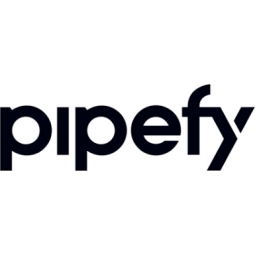
|
Alvaz's Journey to Efficient HR Request Management with Pipefy
Alvaz, a Brazilian agritech company, faced significant challenges due to its rapid growth. With each new crop cycle, the demand for their services increased, leading to a surge in the number of employees and the need for better process organization. In 2019, the company grew from 5 to 20 employees, making traditional methods of communication and process management insufficient. As Alvaz expanded into more countries and Brazilian states, the need for a reliable system to manage employee requests to the central office became evident. These requests were primarily equipment-related, including uniforms, safety equipment, and drone maintenance parts. By 2020, with around 30 employees, Alvaz was frequently missing deadlines and lacked visibility over the status of their many requests. The company needed a solution to manage their requests and improve the employee experience.
|
|

|
Maximizing IT Investments and Streamlining Accounts Payable Lifecycle: A Case Study on Ocean Network Express
Ocean Network Express (ONE), the world’s seventh-largest container carrier, was formed following the merger of Japan’s three largest shipping lines in 2017. The merger led to a complex and disjointed process architecture, with a lack of communication between departments and systems posing a significant challenge. The accounts payable process, critical for timely vendor payments, was particularly inefficient, involving three different sub-departments within the finance team. The process was primarily decentralized, managed manually, and often involved a lengthy paper trail. The finance team used spreadsheets to keep the process on track, but it was difficult to manage and standardize. The COVID-19 pandemic further exacerbated these issues, as the shift to remote work made the process unmanageable and hindered seamless communication between the finance sub-departments and systems. The team needed a platform, system, or tool to fit all of their processes in this new reality.
|
|

|
Improving Customer Satisfaction Rates with IoT: A Case Study on GE Healthcare
GE Healthcare, a global leader in medical technology and digital solutions, faced several challenges in managing support requests from its channel partners. The company provides medical equipment and services to clinicians worldwide, and when a piece of equipment is down, the channel partner may reach out to GE Healthcare for help. Capturing and managing these support requests was a complex task, often leading to hours spent searching for information. Additionally, GE Healthcare needed to ensure that channel partners were delivering the same level of support to their customers as those supported directly by GE. However, with their existing customer support process, GE managers had little visibility into support requests. They were unaware of the number or status of requests and who was responsible for each. This lack of process control and visibility into channel partners led to the realization that a change was necessary.
|
|
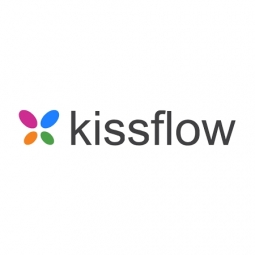
|
Digital Transformation: A Key to Decarbonization at First Philippine Holdings
First Philippine Holdings (FPH), a pioneering holdings company with a strong portfolio in clean and renewable energy, faced significant challenges in its operations due to manual processes. The approval workflows were manual, involving sifting through hundreds of emails, physical forms, and SAP data. This not only made the process time-consuming but also led to difficulties in tracking approval requests. Approval requests often got lost due to the lack of a centralized tracking tool. Furthermore, obtaining timely approvals from senior leaders was nearly impossible without a mobile workflow management application. The pandemic further highlighted the need for digitalization and minimizing the company's carbon footprint.
|
|

|
CABAÏA's Journey Towards Carbon Neutrality with Greenly
CABAÏA, a French ready-to-wear accessories brand, was committed to Corporate Social Responsibility (CSR) and environmental sustainability but lacked a clear understanding of its carbon footprint. The company had been experiencing strong growth since its inception in 2015, with a doubling of turnover every year. However, it was aware that in the modern business world, a commitment to the environment and CSR was essential for continued success. The challenge was to accurately measure its carbon footprint to identify areas where it could take concrete action to limit emissions. The traditional methods of CSR assessment were seen as old school, imprecise, and tedious, involving manual review of invoices and other data. CABAÏA needed a more efficient and reliable solution to automate this process.
|
|
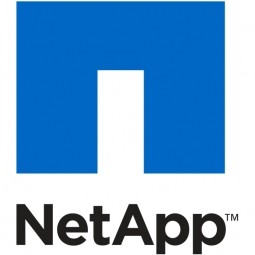
|
AI Integration in Business: A Case Study of NetApp ONTAP AI in AI_LAB
ITOCHU Techno-Solutions (CTC) operates the Technical Solution Center (TSC), a comprehensive facility that allows client companies to evaluate and verify systems to be introduced using actual equipment. It is Japan's largest verification facility for a multi-vendor environment and offers full technical support from experienced engineers. In recent years, the TSC has seen a significant increase in the number of AI/deep learning verification projects, and opportunities to verify data and service integrations between the TSC system and public cloud services like AWS, Microsoft Azure, and Google Cloud Platform. This growing need for verification of hybrid cloud and AI/deep learning drove CTC to create a new verification environment, AI_LAB, in late 2018. AI_LAB was designed to verify large-scale AI utilization and to build learning models. However, the challenge was to establish a system that could handle the advanced verification requirements of AI/deep learning.
|
|

